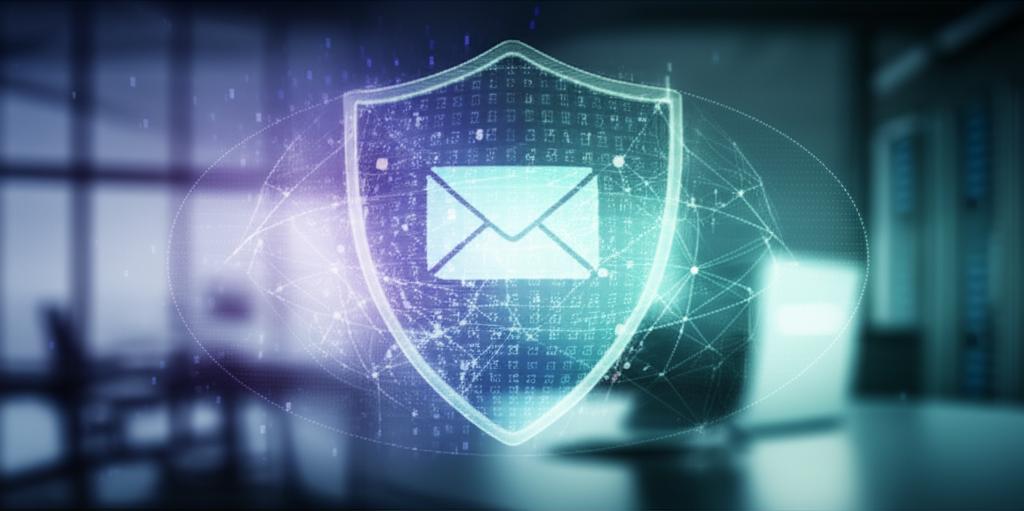Fortify Your Inbox: Essential Email Security Protocols Every Business Needs
In today’s interconnected business world, email remains the primary communication channel. While indispensable, it’s also the most vulnerable entry point for cyber threats. A single successful email attack can lead to data breaches, financial losses, reputational damage, and severe compliance penalties. To safeguard your sensitive information and maintain operational continuity, implementing robust email security protocols isn’t just an option—it’s an absolute necessity.
The Unseen Threats: Why Email Security is Non-Negotiable
Before diving into solutions, it’s crucial to understand the landscape of threats your business faces:
- Phishing and Spear Phishing: Deceptive emails designed to trick recipients into revealing sensitive information or clicking malicious links. Spear phishing targets specific individuals with highly personalized attacks.
- Malware and Ransomware: Malicious software often delivered via email attachments or links, designed to infect systems, steal data, or encrypt files until a ransom is paid.
- Business Email Compromise (BEC): Sophisticated scams where attackers impersonate executives or trusted partners to trick employees into transferring funds or divulging confidential data.
- Data Breaches and Compliance Risks: Successful attacks can lead to the exposure of sensitive customer or company data, resulting in hefty fines under regulations like GDPR, CCPA, or HIPAA.
Core Email Security Protocols Every Business MUST Implement
These foundational protocols are essential for authenticating legitimate emails and protecting against spoofing and phishing attempts:
- SPF (Sender Policy Framework):
An email authentication method designed to detect forging sender addresses (spoofing). SPF allows a domain owner to specify which mail servers are permitted to send email on behalf of their domain. When an email server receives an email, it can check the sender’s IP address against the SPF record published in the sender’s DNS. If the IP doesn’t match, it flags the email as suspicious.
- DKIM (DomainKeys Identified Mail):
DKIM adds a digital signature to outgoing emails, allowing the recipient server to verify that the email truly originated from the claimed domain and that its content hasn’t been altered in transit. This provides cryptographic assurance of authenticity and integrity, complementing SPF by verifying the sender’s domain directly.
- DMARC (Domain-based Message Authentication, Reporting, and Conformance):
Building upon SPF and DKIM, DMARC allows domain owners to tell recipient mail servers how to handle emails that fail SPF or DKIM checks (e.g., quarantine, reject, or allow). Crucially, DMARC also provides reporting, giving domain owners visibility into who is sending emails on their behalf and how those emails are being handled by recipient servers, helping to identify and block unauthorized use of their domain.
- TLS (Transport Layer Security):
TLS encrypts email communications as they travel between mail servers. While it doesn’t encrypt the email content itself at rest, it prevents eavesdropping and tampering while the email is in transit over the internet, acting like a secure tunnel for your messages.
- S/MIME (Secure/Multipurpose Internet Mail Extensions):
For true end-to-end encryption and digital signatures, S/MIME provides a robust solution. It allows senders to encrypt email content so only the intended recipient (who possesses the corresponding private key) can read it. It also enables digital signatures, verifying the sender’s identity and ensuring the message hasn’t been tampered with after signing.
Advanced Layers of Protection: Beyond the Basics
While core protocols are critical, a comprehensive strategy requires additional layers:
- Email Encryption (Beyond TLS/S/MIME): For highly sensitive data, consider specialized email encryption services that offer persistent encryption, even after the email has been delivered, and secure access portals.
- Advanced Threat Protection (ATP) & Anti-Malware: AI-powered solutions that detect and block sophisticated threats like zero-day exploits, polymorphic malware, and advanced phishing attempts that traditional filters might miss. This often includes sandbox analysis of attachments and URL rewriting.
- Spam Filtering and Content Filtering: Essential for reducing inbox clutter and blocking unsolicited or malicious bulk emails. Content filtering can prevent sensitive information from leaving your organization via email.
- Multi-Factor Authentication (MFA): Implementing MFA for all email accounts adds a critical layer of security, requiring a second verification step (e.g., a code from a mobile app or a biometric scan) beyond just a password.
- Email Archiving and Backup: Not strictly a security protocol, but vital for data retention, legal compliance, disaster recovery, and forensic investigations in case of a breach.
- Employee Training and Awareness: The human element is often the weakest link. Regular, engaging training on identifying phishing, safe email practices, and company policies is paramount.
Implementing Your Email Security Strategy
- Conduct a Thorough Audit: Understand your current email infrastructure, vulnerabilities, and data sensitivity.
- Choose the Right Solutions: Select security services and tools that align with your business needs, budget, and compliance requirements.
- Implement and Configure Protocols: Properly set up SPF, DKIM, DMARC, and TLS. Ensure your email service provider supports these.
- Deploy Advanced Protections: Integrate ATP, spam filters, and encryption solutions.
- Enforce MFA: Make MFA mandatory for all employee email accounts.
- Regularly Train Employees: Conduct ongoing security awareness programs.
- Monitor and Review: Continuously monitor email traffic for anomalies and review your security posture regularly to adapt to new threats.
Email security is an ongoing commitment, not a one-time setup. By implementing these essential and advanced protocols, businesses can significantly reduce their risk exposure, protect their valuable assets, and maintain trust with their clients and partners. Stay vigilant, stay secure.







